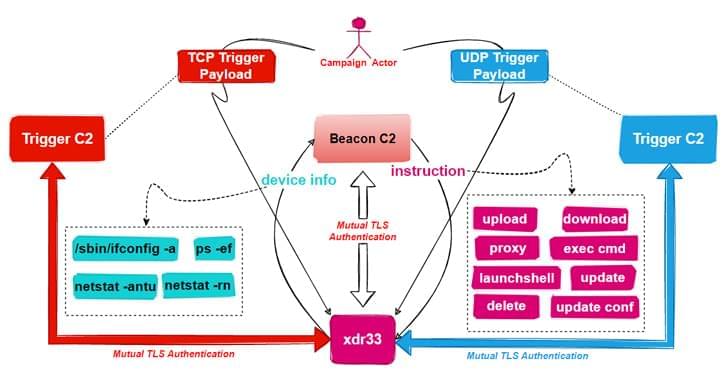Cardiovascular disease (CVD) is the #1 cause of death globally and encompasses a broad set of over a dozen disorders that compromise the function of the heart and blood vessels. The major cause of CVD by far, however, is the pathological process of (CDC, 2022). Like the accumulation of rust within pipes, involves the gradual build up of plaque within arteries which compromises the flow of blood and oxygen in the body. Strikingly, is responsible for more than 40% of all deaths worldwide, and 80% of those deaths are in individuals 65 years and older. This includes mortality from devastating pathologies that are among the leading causes of death like coronary artery disease, chronic obstructive pulmonary disorder and stroke (Pahwa, 2022).
Page 3504
Jan 17, 2023
Class Action Filed Against Stability AI, Midjourney, and DeviantArt for DMCA Violations, Right of Publicity Violations, Unlawful Competition, Breach of TOS
Posted by Kelvin Dafiaghor in category: robotics/AI
“AI needs to be fair and ethical for everyone,” said lawyer/programmer Matthew Butterick. “But Stability AI, Midjourney, and DeviantArt are appropriating the work of thousands of artists with no consent, no credit, and no compensation. As a lawyer who is also a longtime member of the visual-arts community, it’s a pleasure to stand up on behalf of fellow artists and continue this essential conversation about how we the people want AI to coexist with human culture and creativity.”
Since its founding in 2000, DeviantArt had grown to be a haven for artists of all stripes. A core aspect of participating in the DeviantArt community for artists is the practice of sharing digital images of their artwork. Today, DeviantArt bills itself as “the world’s largest art community,” hosting millions of images. At the same time, it offers DreamUp, a product that unlawfully infringes on the rights of its own art community. To add insult to injury, a large portion of the training data for Stable Diffusion—which powers DreamUp—was made up of images scraped from DeviantArt without permission from the artists that posted them.
For more information, please see our case page www.saverilawfirm.com/ai-art-generators-copyright-litigation and our case website stablediffusionlitigation.com.
Jan 17, 2023
Hackers Took Over a Commercial Satellite to Broadcast Hacker Movies
Posted by Omuterema Akhahenda in categories: cybercrime/malcode, satellites
A group of hackers was able to take control of a decommissioned satellite and use it to stream a hacking conference’s talks and hacker movies.
On Saturday, at the DEF CON hacking conference in Las Vegas, Karl Koscher, one of the members of a hacking enthusiasts group called Shadytel, explained how he and his friends were able to legally stream from a satellite in geostationary orbit—35,786 km or 22,236 miles from the surface of the planet.
The satellite had been decommissioned and was about to be sent to the so-called “graveyard orbit,” a far-away orbit where satellites go to die.
Continue reading “Hackers Took Over a Commercial Satellite to Broadcast Hacker Movies” »
Jan 17, 2023
Meet the Mexican girl with an IQ higher than Einstein’s
Posted by Omuterema Akhahenda in categories: education, neuroscience
Mexico City.- At just eight years old, Adhara Perez is the girl who exceeded the IQ of Albert Einstein and Stephen Hawking with 162. She dreams of being an astronaut one day, but she came to think that this would be impossible.
When she was three years old, the little girl from the slums of Tlahuac, in Mexico City, was diagnosed with Asperger (autism spectrum). “I made a mockery at school”, she said.
Her classmates called her “weird” and the teachers came to think that she would not have much future in the academy. Nallely Sanchez, mother of the child, did not realize the situation and did not want her daughter to suffer.
Jan 17, 2023
China trounces U.S. in AI research output and quality
Posted by Saúl Morales Rodriguéz in category: robotics/AI
TOKYO/BEIJING — China is the undisputed champion in artificial intelligence research papers, a Nikkei study shows, far surpassing the U.S. in both quantity and quality.
Tencent Holdings, Alibaba Group Holding and Huawei Technologies are among the top 10 companies producing AI research, according to the study. The Chinese contingent is steadily gaining representation in an area dominated by U.S. players.
Jan 17, 2023
New Backdoor Created Using Leaked CIA’s Hive Malware Discovered in the Wild
Posted by Saúl Morales Rodriguéz in category: cybercrime/malcode
A new backdoor has been discovered that borrows its features from the leaked CIA’s Hive malware suite.
Jan 17, 2023
CISA Warns of Flaws Affecting Industrial Control Systems from Major Manufacturers
Posted by Saúl Morales Rodriguéz in category: security
CISA has issued a warning about significant security weaknesses found in products from Industrial Control Systems (ICS) manufacturers.
Jan 17, 2023
Associate or Senior Editor, Nature Nanotechnology
Posted by Omuterema Akhahenda in categories: engineering, nanotechnology
@NatureNano is hiring!
If you are an expert in 2D materials, electronics, optoelectronics, nanophotonics, or electronic engineering and interested in a career in science publishing?
Apply by Jan 22nd 2023 and join the editorial team.
Continue reading “Associate or Senior Editor, Nature Nanotechnology” »
Jan 17, 2023
Gone fishing: highly accurate test for common respiratory viruses uses DNA as ‘nanobait’
Posted by Omuterema Akhahenda in category: biotech/medical
A new test that ‘fishes’ for multiple respiratory viruses at once using single strands of DNA as ‘bait’, and gives highly accurate results in under an hour, has been developed by Cambridge researchers.
The test uses DNA ‘nanobait’ to detect the most common respiratory viruses – including influenza, rhinovirus, RSV and COVID-19 – at the same time. In comparison, PCR (polymerase chain reaction) tests, while highly specific and highly accurate, can only test for a single virus at a time and take several hours to return a result.
While many common respiratory viruses have similar symptoms, they require different treatments. By testing for multiple viruses at once, the researchers say their test will ensure patients get the right treatment quickly and could also reduce the unwarranted use of antibiotics.
Jan 17, 2023
02002–02029 (27 years): By 2029 no computer — or “machine intelligence” — will have passed the Turing Test
Posted by Kelvin Dafiaghor in categories: entertainment, robotics/AI
The essence of the Turing Test revolves around whether a computer can successfully impersonate a human. The test is to be put into practice under a set of detailed conditions which rely on human judges being connected with test subjects (a computer and a person) solely via an instant messaging system or its equivalent. That is, the only information which will pass between the parties is text.
To pass the test, a computer would have to be capable of communicating via this medium at least as competently as a person. There is no restriction on the subject matter; anything within the scope of human experience in reality or imagination is fair game. This is a very broad canvas encompassing all of the possibilities of discussion about art, science, personal history, and social relationships. Exploring linkages between the realms is also fair game, allowing for unusual but illustrative analogies and metaphors. It is such a broad canvas, in my view, that it is impossible to foresee when, or even if, a machine intelligence will be able to paint a picture which can fool a human judge.
While it is possible to imagine a machine obtaining a perfect score on the SAT or winning Jeopardy—since these rely on retained facts and the ability to recall them—it seems far less possible that a machine can weave things together in new ways or to have true imagination in a way that matches everything people can do, especially if we have a full appreciation of the creativity people are capable of. This is often overlooked by those computer scientists who correctly point out that it is not impossible for computers to demonstrate creativity. Not impossible, yes. Likely enough to warrant belief in a computer can pass the Turing Test? In my opinion, no. Computers look relatively smarter in theory when those making the estimate judge people to be dumber and more limited than they are.
















